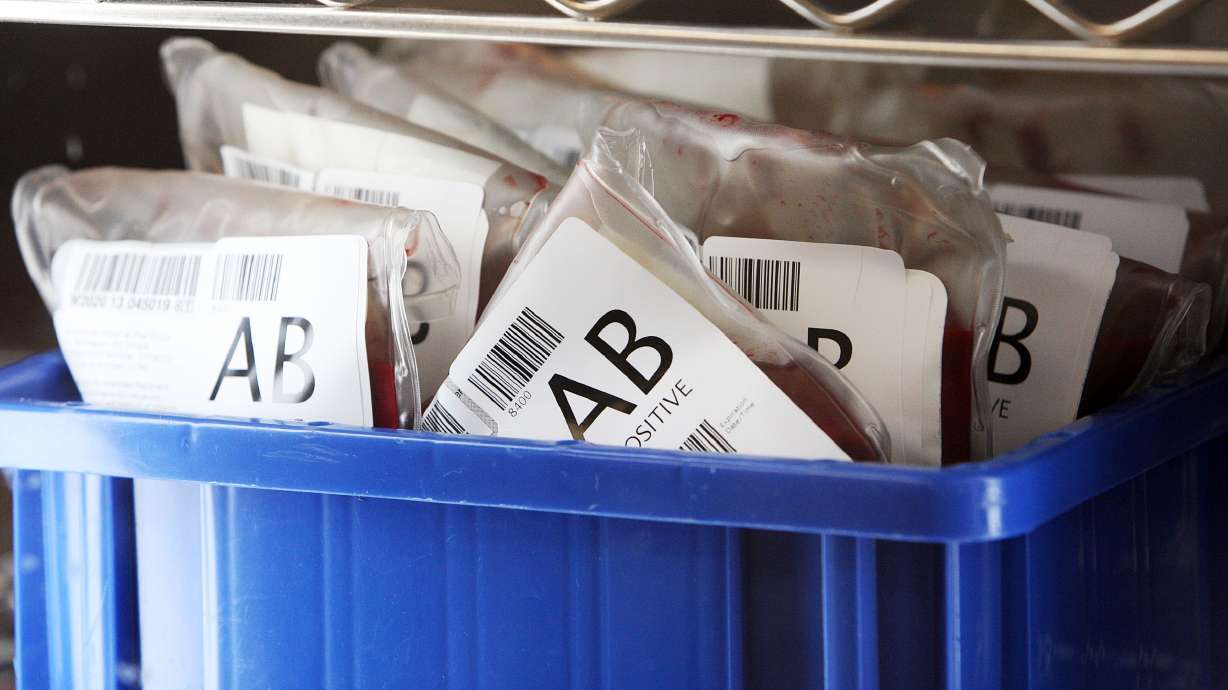Estimated read time: 4-5 minutes
This archived news story is available only for your personal, non-commercial use. Information in the story may be outdated or superseded by additional information. Reading or replaying the story in its archived form does not constitute a republication of the story.
SALT LAKE CITY — The American Red Cross is in need of blood donors, which is something you've most likely heard many times before. This time, however, the holidays, cold weather and COVID-19 have all led to reduced donations at the same time and caused the lowest supply levels in a decade.
"When that turnout slows down, it just creates a bigger challenge to try to make that up in any way possible. And it's ... a constant challenge to make sure that that blood supply is sufficient for those patients that need it," said Benjamin Donner, executive director of the Red Cross chapter in central and southern Utah. "There's no other way to get that blood other than from one of our amazing donors."
A press release from the American Red Cross said that the organization aims for a five-day supply of blood donations, but now it is down to a one-day supply. Additionally, blood distributions to hospitals are outpacing the number of blood donations, so the supply will get lower if current trends hold.
"Doctors have had to make difficult decisions about who will receive transfusions or wait for more blood to become available," the release said.
Keith Paul, regional communications director for the Utah and Nevada region of the American Red Cross, explained that January is "National Blood Donor Month," partially because this is an annual problem. As people get busy with the holiday season and have seasonal illnesses, even consistent blood donors sometimes miss opportunities to donate.
Paul said it is easy to set up an appointment to donate, using the Red Cross App or redcrossblood.org to schedule an appointment. He said there may be a blood drive nearby that people may not know about, but it will show up if they search their ZIP code in the Red Cross system.
Typically, the Red Cross needs 13,000 pints of blood each day, which means about 13,000 donors. According to the Red Cross, it will need an additional 10,000 blood products each week to meet current needs. Donated blood has a 42-day shelf life, which means a consistent supply is important.
Donner said that one of the benefits of the Red Cross is that it is a connected system, each chapter takes care of its own needs and then shares extra donations with other areas of the country.
He said that when he needed a donation for himself, it really opened his eyes to the urgency of donating blood.
"What would have happened if that wasn't available when I needed it?" he said.
Donner said one reason for the dip in blood supply now is that there was a rise in the number of surgeries requiring blood transfusions in 2021, depleting blood inventory. Some patients who had deferred care due to the COVID-19 pandemic ended up needing surgery to address a more-advanced version of a disease, leading to further depletion of the Red Cross' blood supply.
The rise in COVID-19 cases has also caused a decrease in donations as more people opt to be more isolated. As churches, schools and colleges close or cancel sponsored blood drives, it also leads to fewer new blood donors, as well. The Red Cross reported a 34% drop in new donors from last year.
Donner said that the Red Cross is taking as many precautions as possible to prevent the spread of COVID-19 at donation sites, including having vaccinated staff and requiring masks. COVID-19 does not spread through blood, so Donner said as long as someone who was exposed to or tested positive for COVID-19 has completed isolation protocols and is not showing symptoms, they can donate blood.
As part of the response to COVID-19, the Red Cross has moved more things online, meaning potential donors can complete the initial survey before making an appointment, decreasing wait times. Another benefit of using the app, Donner said, is that the Red Cross, in most cases, will send a notification letting a donor know when and where their blood was used.
"I've been donating blood since I was 16 years old and high school. The first time I got that message, everything stopped, and it brought it full circle. I just thought about that person at that particular hospital," Donner said. "When you get that notification, it changes you a little bit."
He said if anyone is not able to donate blood and wants to help, they can invite someone else to donate on their behalf, which can be just as helpful as donating.









